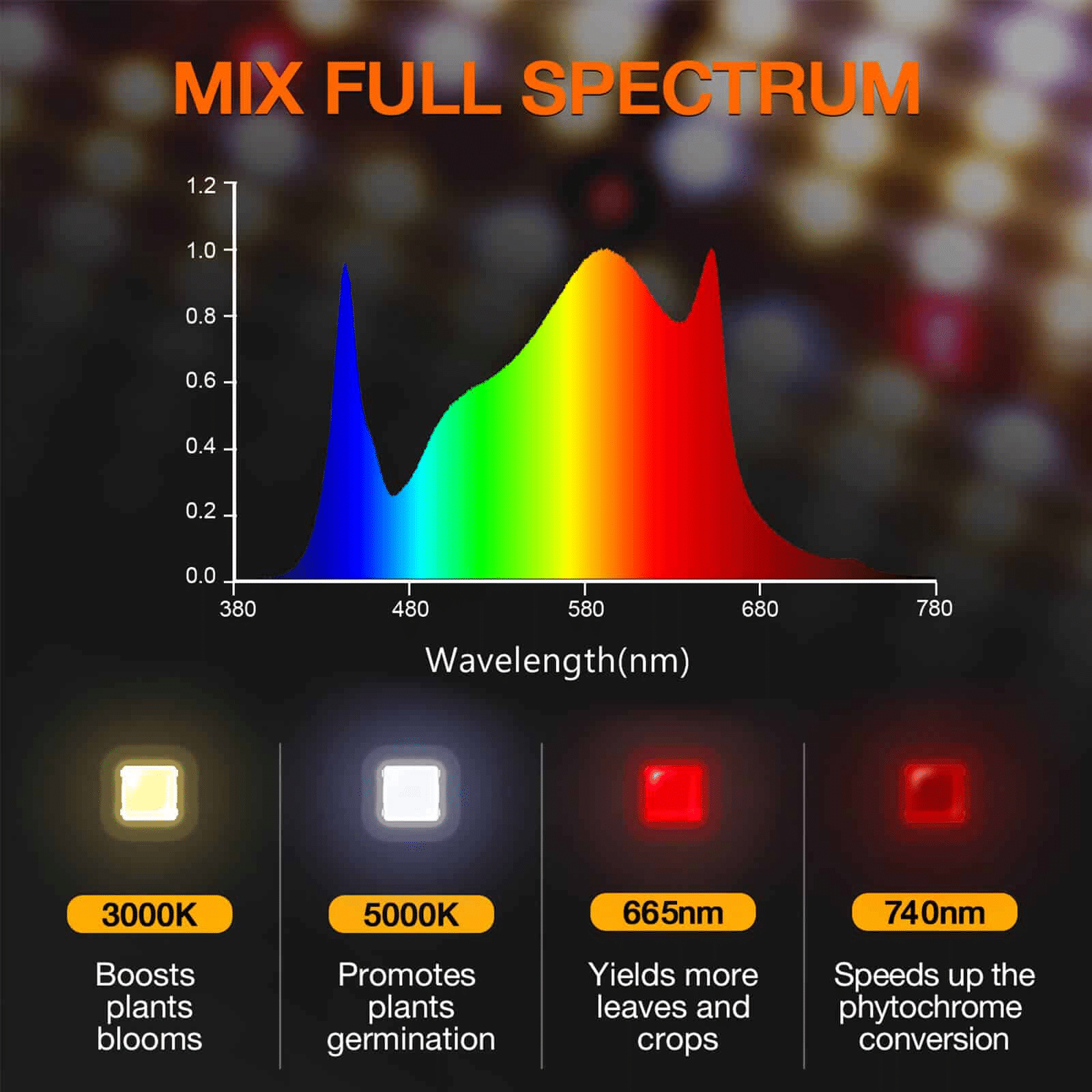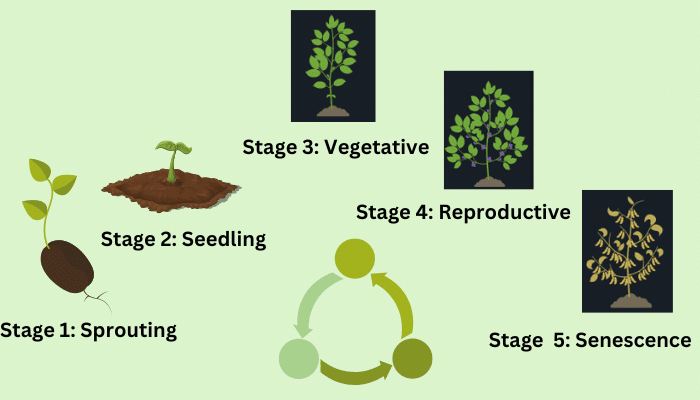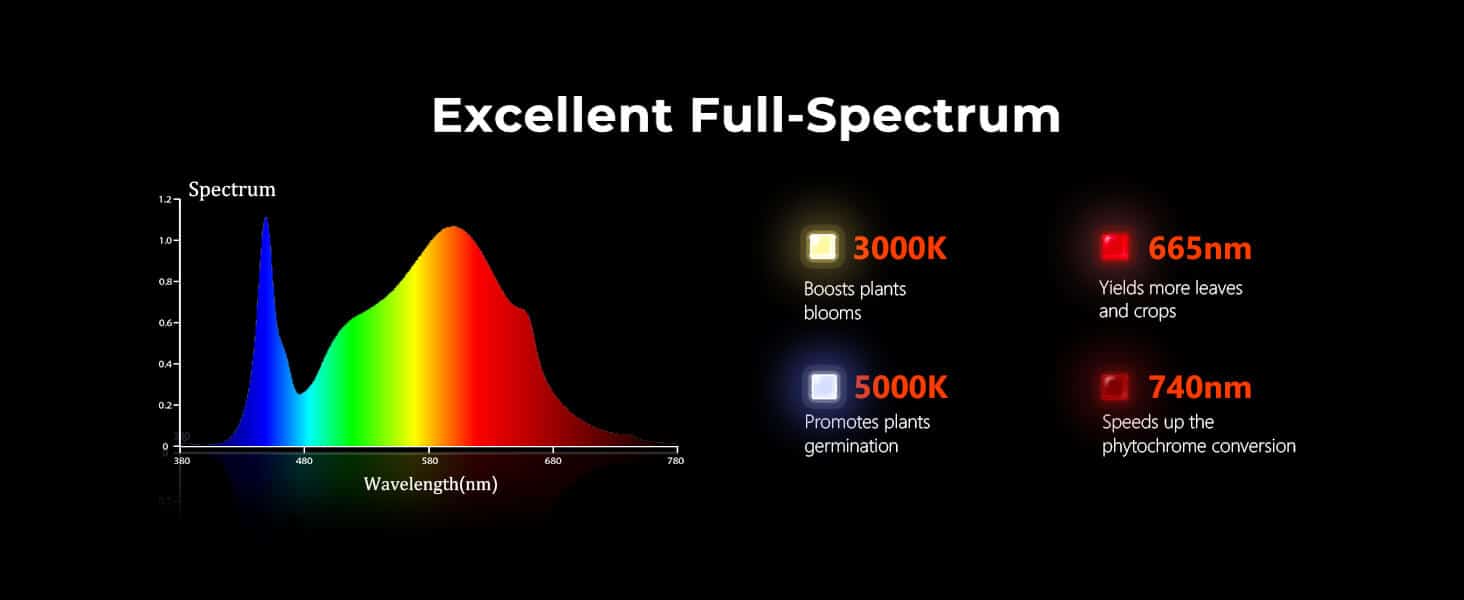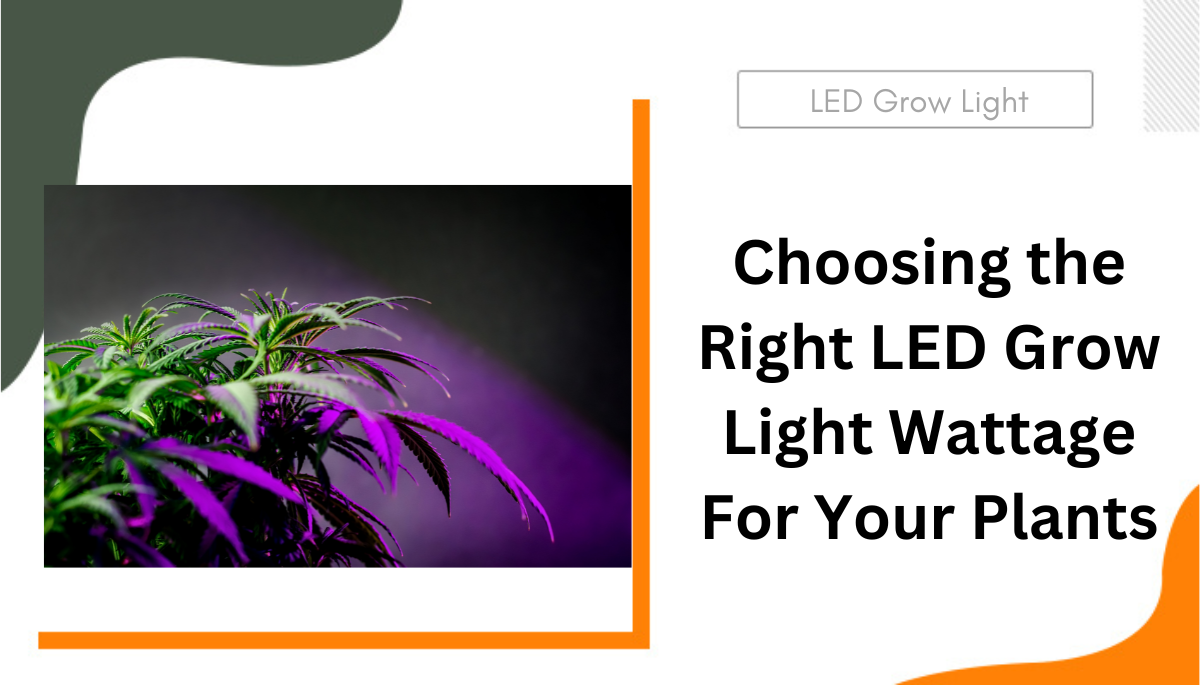How to Choose the Grow Light Wattage for Plants [Fixed]
More growers are adopting LED grow lights as their go-to light source for their grow tents. These lights come in different sizes and models to meet the specific needs of growers. However, growers are often faced with the tricky decision of choosing the right LED grow light wattage that best meets the light requirements of their plants.
In this article, we will first walk you through how does a grow light work and how does grow light wattage impact your plant growth, then you’ll find answers to the best grow light wattage for indoor plants.
Table of Contents
How Do Grow Lights Work
Indoor plants do not have access to direct sunlight. Therefore, they require an artificial light source, which is where grow lights come in. They emit specific wavelengths of light that are absorbed by plants for photosynthesis, which is the process of converting light energy into chemical energy to fuel plant growth.
There are different types of grow lights, including LED grow lights, HID, and fluorescent lights, but they all work in a similar way. When you turn on a grow light, it emits photons, which are particles of light energy. The photons are absorbed by the plant's leaves and used to power photosynthesis.

Grow Light Wattage: How Does It Influence Plant Growth
The grow light wattage for indoor plants determines how much light energy a grow light can provide to the plants. The more wattage a grow light has, the brighter it will be and the more light it can provide to the plants. However, it’s not always the more, the better. Why?
Plants at different growth stages require a certain amount of light energy to develop properly, and this amount can vary depending on the plant strains, grow tent sizes, and other factors. In general, plants need more light during the vegetative stage and less light during the flowering stage, but the exact amount of wattage stays uncertain in real cases.
Additionally, not all types of grow lights have the same efficiency when converting electrical energy into light energy. For example, LED grow lights are more efficient than traditional high-pressure sodium (HPS) lights, which means they can provide the same amount of light with less wattage.
How to Choose Grow Light with the Right Wattage
Reading so far, the next consideration is choosing the grow light with the right wattage for your grow area. This process depends on three major factors – the growth phase of your plants, the total area of your grow tent, and the type of grow lights you employ.
-
Growth Phase of Your Plants - Determine Ideal Light Intensity
As briefly mentioned above, each phase in the lifecycle of your plants requires a different amount of light. In terms of the general three growth stages, the grow light wattage for seedlings does not require a high intensity, but the vegetative stage does, and the flowering stage thrives best with an average light intensity.

-
Size of Your Grow Area - Determine Total Wattage Needed
Premised on the Photosynthetic Photon Efficacy (PPE) which measures how efficiently a bulb converts (watts) into light (photons), the watt per square foot (watt/sq ft) principle is widely used to assess the ability of a bub to light up a grow area. It comes of great help when determining the number of watts required and the number of LED units you need for complete and optimal illumination. A small grow space requires less power, while vice versa.
The standard rule of thumb for grow lights depends on the efficacy (PPE) of the LED lights:
- Low-efficacy LED lights, including the generic lights, have a PPE of about 1.0 µmol/J and require 50-60 w/sq ft.
- Medium efficacy LED lights, including the housing-type lights, have a PPE of about 1.5 µmol/J and require 30-40 w/sq ft.
- High-efficacy LED lights, including those with quality diodes or high-end drivers, have a PPE of about 2.5 µmol/J and require 25-30 w/sq ft.
Get puzzled? Here’s an example. If you have a 4ft x 4ft grow area and plan to use high-efficacy lights, you only need lights that provide between 400w (25w x 4ft x 4ft) and 480w (30w x 4ft x 4ft).
However, if you are using low-efficacy lights, you will need lights that can provide between 800w (50w x 4ft x 4ft) and 960w (60w x 4ft x 4ft). In this case, you can buy a 1000-watt LED grow light.
Based on previous experiences, it is advisable not to exceed a maximum of 50 watts per square foot in your grow area. Exceeding this amount can create an excessive light intensity, leading to stunted growth and poor overall development of your plants.
-
Determine the Type of Grow Lights
Although there are many types of grow lights in the market, such as HPS vs LED grow lights, and fluorescent grow lights, LED grow lights are the most recommended options. LED chips generally have higher PPEs, which is why they require fewer watts to emit higher amounts of light compared to other types of lamps or bulbs with lower PPEs.
Spider Farmer is a reputable manufacturer of different kinds of LED grow lights. The company has continuously rolled out cultivation illumination solutions that meet the needs of private cannabis farmers and industrial cultivators. Spider Farmer’s LED grow lights are powered by state-of-the-art chips, for example, Samsung IM301B, that deliver high-efficacy PPEs. They are also more efficient and easier to use, with adjustable brightness features and durable light switches.

Spider Farmer ®sf series 1000D full-specturm LED grow light
Conclusion on Grow Light Wattage
Plants cannot survive without light. Outdoor plants obtain light from the sun, while indoor plants rely on artificial sources. LED grow lights offer more lighting options and capabilities and are cost-efficient over a long period. Once you have determined how many watts of LED light your grow area requires, you may purchase a LED grow light or a combination of LED grow lights that offer such an output.
Feel free to check out the Spider Farmer LED grow lights catalog to see which model works best based on your grow area specifications and needs.
FAQs about Grow Light Wattage
- What is the best wattage for grow lights?
The best wattage for grow lights depends on various factors such as the type of plants you are growing, the size of your grow tent, the type of grow light you are using, and the growth stage of your plants. However, as a general rule of thumb, when using LED grow lights, you should aim for around 30-50 watts per square foot of grow space, while for traditional grow lights, you should aim for 50-80 watts per square foot of grow space.
- How many plants can I grow with a 100W LED light?
On average, a 100W LED light can cover an area of around 2-4 square feet for vegetative growth and 1-2 square feet for flowering growth. If you are growing lettuce indoors or other small plants, you can grow around 1-4 plants per square foot of grow space. For larger plants such as tomatoes or peppers, you may need to space them out more and grow 1-2 plants per square foot of grow space.
- Is higher wattage better for grow lights?
Not necessarily. While higher-wattage grow lights generally produce more light than lower-wattage grow lights, the quality and efficiency of the light emitted by the grow light are just as important as the wattage.
- Is 30-watt grow light enough?
For small plants that do not require high-intensity light, such as herbs, lettuce, or succulents, 30 watts may be enough. However, for larger plants, a 30-watt grow light is not good enough.



I have a 5.5’ x 12’ grow room, mylar lined, 96” ceiling. I am using two SF 4000’s at 85%-100% power. HGSC Skywalker photo. Growth is slow, but green and healthy. Should be ready late Feb./early March?
Is this enough light? I like the quantum board.
Are there any real benefits to switch to bar style?
How many lights for this much space (SF 4000) preferred.
I am open to suggestions.
hi, 2 SF4000s only 900w are not enough for 5.5’x12′ grow rooom. We recommend at least 3 SF4000 for 5.5’x12′ grow room, 4 would be even better. 🙂
SE/G series are larger in size, have higher wattage, and more uniform ppfd, making them more suitable for large-area planting.
Are quantum style lights becoming obsolete? It appears that to be the case. If so, why? I suspect its business related, my buddy says its the next step in technology.
Hi Jamie,
No, they are not obsolete but exsiting in another way. One major reason why you can’t see many quantum LED lights is this trademark ‘quantum board’ is registered by a company. So, you know, to avoid infringement. Also, quantum lights tend to have more heat emission.
Hi , I have a 8×4 x 72” hi grow room with 4 auto flowers using your equation for wattage how much will I need and which light or combination of spider farms lights will I need ? Thanks
hi, we recommend 2 x SE7000 for 8×4 grow room
Which of your model LED lighting do you recommend for Aroids (ie. Philodendron, Anthurium, Alocasia, Epipremnum). Lighting would like be less than 1 foot from the plants, probably closer to 6in or less in some cases. These typically don’t receive direct sun and get indirect sunlight blocked from the canopy in the jungle/tropical forests, which means they don’t need high intensity.
SF300 or SF600.
Will the sf2000 grow light grow 2 cannabis plants in a 3x3x72 grow tent?
hi, yes, SF2000 is better for 4×2 tent. If you want to grow in a 3×3 tent SF2000 pro is better. 🙂
Figuring out the correct lighting might be harder than growing the plants.
what lights would u use for both veg an bloom in your 8×8 tent? cheers.
Hi, we recommend 2 x SE7000.
My wife has a young lemon tree that is on rollers so it can be moved into the garage during freezing weather. Is it reasonable to leave it in the garage for extended period of time with a grow light? If so what type and size of grow light? Thanks.
Hi, yes, you can leave it in the garage with a SF1000 LED grow light. 🙂